I have a significant interaction and I wanted to look more deeply into this interaction, however, when I use sim_slopes, johnson_neyman, and prob_interaction in R with the same exact inputs I get different results/plots.
For example:
sim_slopes(radius_full_mrc_in, pred = MRC, modx = gest_rain, johnson_neyman = TRUE, control.fdr = T, jnplot = T)
JOHNSON-NEYMAN INTERVAL
When gest_rain is OUTSIDE the interval [-95.37, 217.27], the slope of MRC is p < .05.
Note: The range of observed values of gest_rain is [16.50, 442.40]
Interval calculated using false discovery rate adjusted t = 2.72
SIMPLE SLOPES ANALYSIS
Slope of MRC when gest_rain = 6.547388 (- 1 SD):
Est. S.E. t val. p
0.01 0.01 2.34 0.05
Slope of MRC when gest_rain = 128.132143 (Mean):
Est. S.E. t val. p
-0.00 0.00 -0.27 0.79
Slope of MRC when gest_rain = 249.716898 (+ 1 SD):
Est. S.E. t val. p
-0.02 0.01 -2.94 0.02
johnson_neyman(radius_full_mrc_in, pred = MRC, modx = gest_rain, control.fdr = T)
JOHNSON-NEYMAN INTERVAL
When gest_rain is OUTSIDE the interval [132.94, 857.35], the slope of MRC is p < .05.
Note: The range of observed values of gest_rain is [6.50, 442.40]
Interval calculated using false discovery rate adjusted t = 2.66
probe_interaction(radius_full_mrc_in, pred = MRC, modx = gest_rain, control.fdr = T, jnplot = TRUE)
JOHNSON-NEYMAN INTERVAL
When gest_rain is OUTSIDE the interval [10.84, 188.81], the slope of MRC is p < .05.
Note: The range of observed values of gest_rain is [16.50, 442.40]
SIMPLE SLOPES ANALYSIS
Slope of MRC when gest_rain = 6.547388 (- 1 SD):
Est. S.E. t val. p
0.01 0.01 2.34 0.05
Slope of MRC when gest_rain = 128.132143 (Mean):
Est. S.E. t val. p
-0.00 0.00 -0.27 0.79
Slope of MRC when gest_rain = 249.716898 (+ 1 SD):
Est. S.E. t val. p
-0.02 0.01 -2.94 0.02
I just want to know if one method is better then the other and why the outputs are different from each other?


